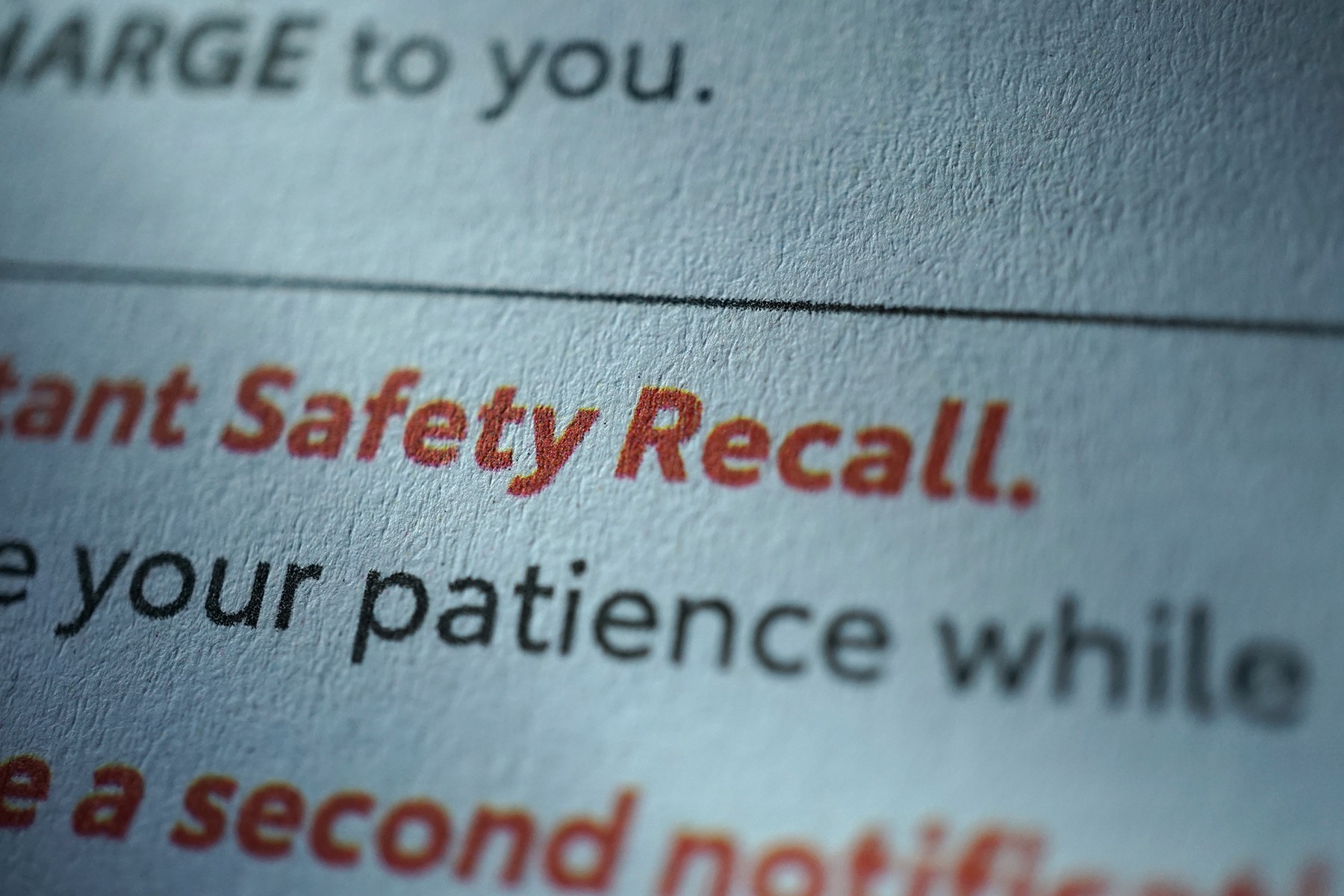Because Quality is the Business, and it Matters for You and Your Customers.
The negative consequences of poor quality and weak customer experience can go viral in seconds. Therefore, it’s critical that you build quality into everything you do. And positive quality is a proven creator of sustained competitive advantage and market value. For both reasons quality has a significant impact on business performance, brand perception, customer loyalty and profitability. Quality is, in fact, the business.
Certainly, digital transformation continues to dominate the attention of business leaders and enterprise budgets, with 40% of tech investments focused on digital transformation initiatives in 2019.
However, while transformative technologies can improve backend operations and product development, companies will never see their full potential without focusing on one fundamental thing — perhaps, the most critical customer-facing element — quality.
The pressure to cut costs, increase margins and use budget money to invest in transformative technologies often leaves little left to spend on quality, however. All too often, these pressures lead to a status quo approach to quality that can eventually result in compliance problems, brand reputational damage and revenue losses.
Ensuring quality standards are met at every stage of the product lifecycle—from design and manufacturing to shipping and distribution and post-sale support—requires a smarter, more modern approach. That means recognizing why quality matters and taking steps to automate quality processes, maximizing cost efficiency and making your life easier in the process.
Why Quality Matters
The clearest reason why quality matters is because it’s important to your customers. Even if customers aren’t actively thinking about quality on a daily basis, their purchases and brand loyalty are directly tied to the quality of your products and their experiences. One study found that 55.3% of consumers are brand loyal because they love a product. And another study found that providing a flawless customer experience has overcome product and price as key brand differentiators for customers.
If it’s so clear that quality matters, why are so many businesses content to maintain a status quo with outdated paper-based tracking and Excel spreadsheets? There are two primary reasons.
First, the drive for quality stands in direct opposition to efforts to “do more with less.” Developing products faster and cheaper doesn’t leave room for strict quality controls. When “faster, cheaper” forces are prevalent, quality and compliance are often treated as equals. Especially in highly regulated industries it’s easy to look at strict compliance requirements as quality benchmarks. But the reality is that regulatory compliance is actually the lowest bar for quality measurement. Just because you’ve met compliance standards doesn’t mean your products will satisfy or delight customers from a quality perspective. However, not focusing on quality can have just the opposite result. Rework, scrap, recalls and warranty claims resulting from poor quality, for example, can lead to a reality of “doing less with less.”
The fact that quality can have multiple definitions and can be ascribed with multiple KPIs is precisely why we must monitor it closely. Even simple changes can have a significant impact on your business, whether it’s from a financial perspective or in terms of customer/employee experience. For example, General Motors had always tracked vital “tear out” and retooling processes in its manufacturing plants with paper-based processes, physical signatures, and outside consultants working 24/7 for between 20 and 40 days. By automating the processes around environment protection requirements, GM saved $165,000 (85% of the initial budget) in a single decommissioning process. In addition to the cost savings, quality automation helped GM gain $1 million back in scrap revenue for the one instance.
Doing Nothing Is Not an Option
For companies that have gotten this far without automated quality management, continuing to use spreadsheets and other existing tools may seem acceptable. Why change if you don’t have to? The problem is that these outdated processes work until they don’t. You could be living on the edge of disaster without even realizing it.
Companies that don’t invest in quality management take a huge risk that could have any number of outcomes, including:
- Reduced competitive position
- Risk of repeated failures
- Inability to anticipate, predict and prevent quality issues
- Higher-than-expected costs for scrap, rework, inventory, recalls, etc.
- Loss of productivity due to time-consuming manual quality processes
- Inconsistent documentation and training
- Human error in manual data entry across disconnected systems
- Lack of visibility into supplier performance and supply chain quality
No business leader wants to be in the position of calculating the actual costs of poor quality or, worse, end up in jail because of poor quality that leads to repeated regulatory failures and harm to customers. However, the known risks of outdated quality management don’t stop product recalls and quality issues from appearing in the news every single day. Even with quality management systems in place, there have been significant quality failures due to a number of factors, like those noted below. These would only be worse if companies decided not to have quality management processes.
Samsung: In 2016, the launch of the Samsung Galaxy Note 7 smartphone was plagued by battery issues that prompted 96 reports of overheating and fires within two months of launch. As a result, Samsung had to recall 2.5 million devices, costing the company $5.3 billion.
Tyson Foods: In 2019, nearly 12 million pounds of Tyson Foods chicken strip products were recalled from stores after at least six people reported finding pieces of metal in their food. While Tyson has started taking corrective action, the company cut profit expectations by $220 million for the year as a result of the recall and reputational damage.
Boeing: Following two crashes within five months and 346 deaths, the Boeing 737 MAX aircraft was grounded in March 2019. After over 1,500 hours of safety tests, the aircraft remains grounded at the start of 2020 and the costs are growing exponentially. Now, estimates say that the total cost of the incident has reached $9.2 billion (and counting).
Each of these troubling incidents (and the countless other product recalls that occur every day) serve as a reminder that quality matters. Mistakes happen and should be expected, but they should never be left unaddressed. In fact, companies that recover most rapidly from these types of events have quality management processes in place for just such occurrences.
Instead of letting it get to this point dealing with these kinds of financial and reputational costs, it’s time to embrace modern, automated quality management. The only question is how?
Understanding the Quality Journey
The first step to modernizing and automating your quality management approach is to determine where your organization is on its Quality Journey. Whether you’re still working with paper-based systems, starting to streamline your workflows with automation, or have implemented quality processes that include your suppliers, your business is somewhere in its Quality Journey.
Where you stand from a quality maturity perspective depends on three key elements:
- Operational Systems: These are the operational processes that are unique to your business/industry, whether that means manufacturing workflows or service operations.
- Quality Systems: The actual system of quality management, including how you measure quality output and incorporate quality standards into the product lifecycle.
- Quality Culture: The maturity of your organization from a quality perspective depends on how employees embrace and contribute to overall product and service quality across the organization.
These are the core areas where you can invest in modernizing quality management, regardless of where you are on the journey. To gauge your company’s appetite for improving and automating quality management, consider the negative consequences and desired future states for each of the four phases on the Quality Journey—Ignite, Accelerate, Expand and Transform.
Phase 1: Ignite
The goal of this stage is to build a strong quality foundation, streamline processes and manage documents and training. At this stage, you’ve likely recognized that there’s an opportunity to reduce your quality costs while also improving your ability to maintain compliance.
This is where most companies start on the Quality Journey, as they prepare to move away from paper- and spreadsheet-based processes. Common customer pain points in the Ignite phase include:
- Disconnected processes
- Challenges with audit compliance
- Lack of visibility into processes
- Lack of reporting
- Lack of standardized processes and practice sharing
- Manual data entry across many systems
- Disconnected shop floor from quality systems
- Inconsistent and time-consuming decision making
- Inability to capture customer feedback
Phase 2: Accelerate
As you move in the second phase of the Quality Journey, you may still experience some of the same pain points as Phase 1. However, you’ve taken strong and positive steps to automate your quality management systems and improve quality in the organization. As your quality program matures, your goals will evolve, and your demands may increase.
In the Accelerate phase, the goal is to enable process flows between functions and systems, capture data at its source, leverage that data everywhere and produce actionable information. Without the right quality management processes in place, trying to meet these goals can result in:
- Regulatory non-compliance and audit failure due to minimal traceability and inaccurate record keeping
- Loss of workforce productivity as employees manually manage corrective action, meta data configuration, supplier quality, and nonconformance handling
- Costly rework across the organization as documents go out of sync, become obsolete, get lost in storage, and offer limited opportunities for analysis
- Greater employee turnover as obsolete processes push frustrated users to find new job opportunities
Outdated quality management tools typically can’t keep pace with your new demands in this phase of the Quality Journey. Because you have hundreds, perhaps thousands, of different quality processes, attempts to increase connectivity between functions and systems can be hindered by less scalable workflows and tools. You may want to increase collaboration to solidify a culture of quality, but disorganized information will hold your teams back.
Phase 3: Expand
The goal in this phase is to integrate internal and external stakeholders (especially your suppliers) into the quality process, extend your quality program to encompass environmental, health and safety (sometimes known as EHSQ convergence) and provide value-added data analytics to all processes.
At this phase of the journey, you will map out solutions to more complex quality and compliance challenges such as:
- Inefficient third-part collaboration in Supplier Corrective Action (SCAR) and change management
- Lack of visibility into supplier performance
- Inability to prioritize and scope supplier audits
- Disjointed communications between various sites and suppliers, such as the costly coordination of in-process changes
- Manual, disconnected environmental, health, safety processes to meet regulatory burdens that vary by geography and industry
Phase 4: Transform
At this stage of the Quality Journey, you’re looking to unlock competitive advantages by becoming more proactive, making quality a strategic initiative and focusing on consistent global harmonization of your integrated quality management system.
To achieve these higher quality goals, you’ll be forced to leap some significant hurdles to operational excellence. Most often companies that drive into the Transform phase seek to mitigate problems like:
- Inability to anticipate, predict and prevent quality issues
- Limited understanding of operational risk
- Inconsistent quality processes in different geographic locations
- Lack of real-time quality data
- Lack of awareness of the ever-changing regulatory environment
Matching Technology to the Quality Journey
Regardless of where you stand in the Quality Journey and what pain points you are currently experiencing, your goal should be to find technology solutions that will scale with you as your quality management processes mature and become the catalyst to excellence that you’ve long envisioned.
When you’re just starting out, you may be tempted to use ad hoc systems like paper-based tracking, Excel or SharePoint to manage a few quality processes. Or, you might invest in light, low-cost QMS software. While these might work in the earliest days of your Quality Journey, their weak points will quickly surface and become evident across your organization, holding back your quality progress.
Choosing the right electronic quality management system (EQMS) and taking the proper first steps in the Quality Journey can make all the difference in your long-term success.
Getting Started with an Automated QMS
Once you know where you are on the Quality Journey, your ideal approach to quality management automation becomes much clearer. Doing too much too soon can easily lead to a lack of acceptance and participation by your teams and ultimately may cause more product quality problems than it solves, regardless of the QMS technology you choose. Rather than trying to change too much at once, companies just starting to modernize quality management should prioritize their list of potential processes to automate.
Simplicity and return on investment should be the main concerns at this point. If you’re going to automate quality processes, you want the technology infrastructure to be effective without adding complexity. And by showing how your quality investments improve revenue and mitigate costs, you set the stage for future quality investments.
Start by focusing on three key areas of quality management to make the beginning of your journey to process excellence an easy one. By taking a few basic but critical steps, you’ll develop great and actionable insight into your quality management environment and better prepare yourself for later stages of the Quality Journey.


